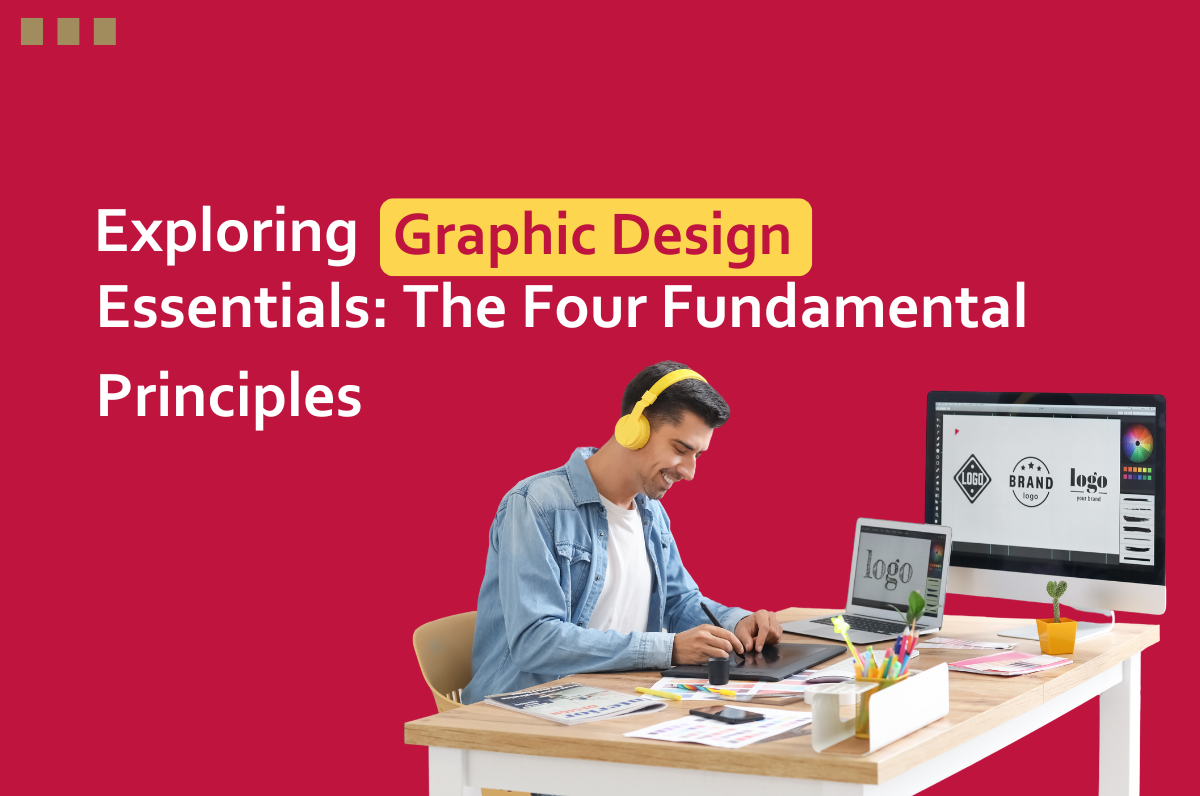Graphic design is a powerful tool for communication, whether you’re creating a poster, a website, or a logo. Understanding the fundamental principles of graphic design can help you create visually appealing and effective designs that communicate your message clearly. In this article, we’ll explore the four core principles of graphic design: color theory, imagery, typography, and composition.
1. Color Theory
Color plays a crucial role in graphic design, as it can evoke emotions, convey meaning, and attract attention. Understanding color theory can help you use color effectively in your designs.
One important aspect of color theory is contrast. Contrast refers to the difference between two colors. Using contrasting colors can make elements stand out and improve readability. For example, using a dark color for text on a light background can make the text easier to read.
Complementary colors, which are colors that are opposite each other on the color wheel, can create a strong contrast and are often used together in design. For example, the combination of yellow and purple can create a vibrant and eye-catching design.
It’s also important to consider the psychological effects of colors. Different colors can evoke different emotions and associations. For example, red is often associated with passion and excitement, while blue is associated with calmness and trust.
2. Imagery
Images are an important part of graphic design, as they can help convey your message and create visual interest. When choosing images for your designs, it’s important to consider their quality and relevance.
High-quality images are essential, especially for online designs. Poor-quality images can make your design look unprofessional and can deter users from engaging with your content. Make sure to use high-resolution images that are optimized for the web.
It’s also important to consider the relevance of the images you use. Choose images that are related to your message and target audience. For example, if you’re designing a website for a restaurant, using images of food and dining can help convey the restaurant’s atmosphere and menu.
3. Typography
Typography refers to the style and appearance of text in a design. Choosing the right fonts can help improve readability and convey the right tone for your message.
When selecting fonts, it’s important to choose ones that are easy to read and appropriate for your message. Avoid using too many different fonts in a design, as this can make it look cluttered and unprofessional. Limiting your use to two or three fonts per design can help maintain consistency and readability.
Consider using complementary fonts to create visual interest. Pairing a bold, attention-grabbing font with a more subtle, easy-to-read font can create a balanced and appealing design.
4. Composition
Composition refers to the arrangement of elements in a design. A well-composed design can help guide the viewer’s eye and create a sense of harmony and balance.
When composing your design, consider the placement of images, text, and other elements. Aim for simplicity and clarity, avoiding cluttered or overly complex layouts. Use whitespace to create breathing room and draw attention to important elements.
Each element in your design should serve a purpose and contribute to the overall message. Consider the hierarchy of information and prioritize important elements to guide the viewer’s attention.
In conclusion, mastering the fundamentals of graphic design can help you create visually appealing and effective designs. By understanding color theory, imagery, typography, and composition, you can create designs that resonate with your audience and effectively communicate your message.
About Incredible Point:
At Incredible Point, we understand the importance of mastering graphic design fundamentals for digital marketing success. Our institute offers comprehensive courses taught by industry experts to help you become a skilled digital marketer. Join Incredible Point today and unlock your potential in the world of digital marketing
FAQ
Q: What is color theory, and why is it important in graphic design?
Color theory is the study of how colors interact with each other and how they can be used to evoke emotions and convey messages. In graphic design, understanding color theory is crucial for creating visually appealing and effective designs that communicate your message clearly.
Q: How can I use color contrast effectively in my designs?
Color contrast refers to the difference between two colors. You can use color contrast to make elements stand out and improve readability in your designs. For example, using a dark color for text on a light background can enhance readability.
Q: What are complementary colors, and how can I use them in my designs?
Complementary colors are colors that are opposite each other on the color wheel. They create a strong contrast when used together and can be used to create visually striking designs. For example, pairing yellow with purple or blue with orange can create vibrant and eye-catching designs.
Q: Why is image quality important in graphic design?
High-quality images are essential in graphic design because they can enhance the professionalism and visual appeal of your designs. Poor-quality images can make your designs look unprofessional and can deter users from engaging with your content.
Q: How can I choose the right fonts for my designs?
When choosing fonts for your designs, it’s important to consider readability and appropriateness for your message. Stick to two or three fonts per design to maintain consistency and readability. Additionally, consider using complementary fonts to create visual interest.

